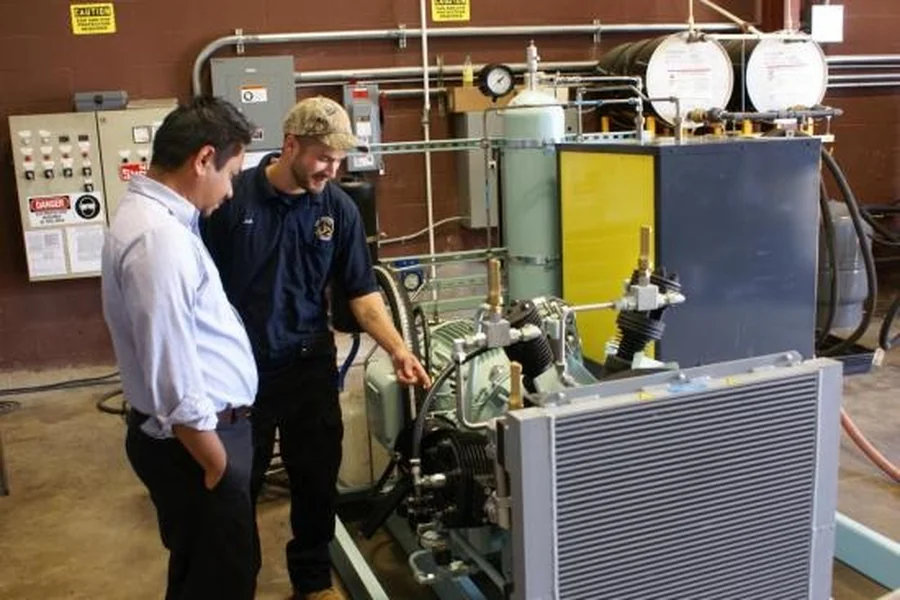Maintaining compressors effectively starts with selecting the right spare parts. These essential components play a critical role in ensuring optimal performance and extending the equipment’s lifespan. Choosing the wrong parts can lead to frequent breakdowns, reduced efficiency, and costly repairs.
With countless options available, identifying the best spare parts can feel overwhelming. Factors like compatibility, quality, and manufacturer reputation are key to making informed decisions. By focusing on these aspects, businesses can keep their compressors running smoothly and minimize downtime.
Identifying Critical Wear Components in Compressors
Wear components in compressors often dictate maintenance frequency and operational reliability. Key parts include pistons, piston rings, valves, bearings, and seals. These elements endure high stress and exposure to extreme pressures, making them prone to wear and failure over time.
Pistons and piston rings experience continuous movement and friction, leading to potential energy losses if not replaced as needed. Valves regulate airflow and can malfunction due to material fatigue or deposits, which impacts compressor efficiency. Bearings are vital for smooth rotation but degrade under heavy loads, risking shaft misalignment. Seals prevent gas or oil leakage and, when worn, can cause contamination or pressure drops.
Businesses sourcing Compressor Spare Parts for these components should prioritize high-quality, OEM-certified options. This ensures proper fitment and maintains equipment efficiency. By identifying and maintaining critical wear components, operators can minimize unscheduled downtime and extend the lifespan of their compressors.
OEM vs. Aftermarket Part Performance
OEM (Original Equipment Manufacturer) parts are engineered specifically for the compressor model they support, ensuring precise compatibility and performance. Designed per original specifications, these components help maintain operational efficiency and reduce premature wear. Using OEM parts enhances reliability and offers assurance of quality, as they adhere to stringent manufacturing standards.
Aftermarket parts, on the other hand, are produced by third-party manufacturers and may not conform to the original specifications of the compressor. While they often come at a lower cost, variations in quality and durability can affect performance. Inconsistent material standards or improper fit can lead to increased maintenance frequency and potential system failures.
For businesses prioritizing uptime, investing in OEM-certified compressor spare parts minimizes risks of breakdowns and performance issues. Visitors exploring supplier catalogs or browsing an official Website should verify certifications and compare the product details with the equipment’s requirements. Selecting parts that meet manufacturer-recommended standards ensures effective maintenance and long-term operational reliability.
Stocking Spare Parts for Uninterrupted Operation
Maintaining a readily available inventory of compressor spare parts ensures minimal downtime during unexpected failures. Operators minimize disruptions by having essential wear components like pistons, seals, and valves in stock. These parts frequently wear out due to constant mechanical stress, making their availability critical for uninterrupted operation.
Businesses achieve efficient inventory management by identifying high-priority spare parts specific to their equipment models. OEM-certified parts, designed for exact compatibility, reduce fitting issues and failures. Stocking both routine maintenance components and emergency backup parts ensures quicker replacements during urgent repairs.
Using reliable sources, such as a manufacturer’s website, helps organizations procure quality-certified spare parts. Detailed part descriptions, compatibility confirmations, and accurate specifications provided online enable informed purchasing decisions. This approach prevents delays caused by incorrect orders, maintaining consistent uptime.
Importance of Maintenance Scheduling and Logs
Regular maintenance scheduling ensures compressors operate efficiently while minimizing unexpected downtime. By creating and following a detailed schedule, maintenance teams can plan inspections and replacements for critical wear components like valves and seals. This proactive approach reduces the risks of sudden failures and extends equipment lifespan.
Logs provide a record of all maintenance activities, offering crucial insights into the performance and history of compressors. They help track usage patterns, predict future maintenance requirements, and identify recurring issues. For example, logging the replacement dates of components like piston rings allows teams to estimate their next service interval accurately.
Combining detailed logs with a well-planned schedule supports preventive servicing. Operators can optimize spare part procurement by using this data, ensuring all necessary compressor spare parts are available when needed. Maintenance logs also act as a reference for troubleshooting, streamlining the identification of problems and minimizing repair delays.
Digital tools, including maintenance tracking software or online resources like a manufacturer’s website, assist in organizing schedules and logs efficiently. These platforms allow updates in real time, keeping teams informed and improving coordination for planned servicing tasks. Businesses relying on compressors for critical operations benefit significantly from leveraging these systems, reducing overall maintenance costs and boosting uptime.
Guidelines for Replacement Cycles and Part Compatibility
Choosing the right compressor spare parts requires careful attention to compatibility, quality, and maintenance schedules. Businesses can avoid costly breakdowns by prioritizing OEM-certified components and maintaining an organized inventory of critical wear parts.
Regularly reviewing replacement cycles and tracking maintenance logs ensures compressors operate efficiently and minimizes unexpected downtime. Leveraging reliable suppliers and digital tools streamlines procurement and enhances operational reliability.
By focusing on high-quality spare parts and proactive maintenance practices, businesses can protect their investment, extend equipment lifespan, and maintain uninterrupted performance.





